The tour takes you to the extreme eastern side of Bhutan, although eastern Bhutan is not that well toured by the visitors as compared to the western and central part, the experience and uniqueness of east Bhutan is a must to be explored as it has to offer aplenty. The tour is specially tailored as to enter through Samdrup Jongkhar district in southeast Bhutan while arriving at Guwahati Airport at Assam India. The tour starts from Samdrup Jongkhar in the south and eventually to other eastern districts of Trashigang, Trashi Yangtse, Mongar, and Lhuntse. Some of the major attractions in east include National Handloom Development project center, National Institute for visually impaired, Sherubtse college (Bhutan’s first university campus), Trashigang Dzong (fortress), Trashi Yangtse Dzong, holy monasteries, temples, and many historical sites.
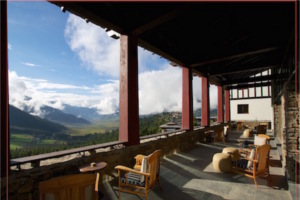
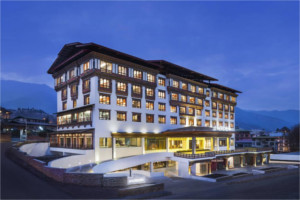
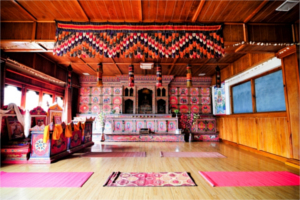
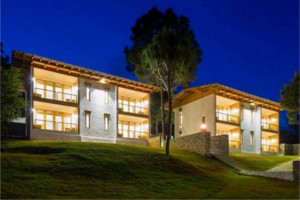
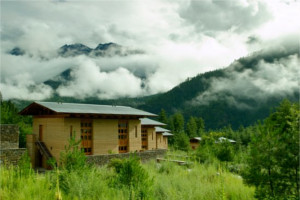
Welcome reception by our representatives at the Guwahati airport.
Drive for about 3 hours from Guwahati (capital of Indian state Assam) to Bhutan’s border in Samdrup Jongkhar and after immigration formalities, transfer to the hotel in Samdrup Jongkhar.
Overnight at Samdrup Jongkhar.
All day drive ascending to the Himalayas covering a distance of 180 km for 6-7 hours. After a few hours’ drives, we will stop to get a blessing from Hindu hermit for the safety of our journey. Get opportunities to visit many religious Bhutanese Buddhist temples, such as Zangdo Pelri Lhakhang, with detailed mural painting.
Stop at Khaling village to visit National Handloom Development Project, which maintains rich tradition of local weaving. Also, visit the National Institute for the Visually Impaired. One of the accomplishments of this progressive institution is the development of the Bhutanese version of Braille’s script. Along the way, you’ll also pass by Karma Thegsum Dechenling Goemba, a huge monastic school and Sherubtse College, first Bhutanese university campus established in 1978. Also, we visit the temple in nearby Kanglung village.
Overnight at Trashigang.
Visit the Trashigang Dzong (fortress) in the morning which was built in the 17th century. The Dzong houses few holistic temples and local government offices. Drive for about 2 hours to beautiful Trashi Yangtse valley. On the way, pay a visit to the Gom Kora temple, a place where 8th-century magician-saint Guru Padmasambhava is believed to have left his body imprints.
A further drive will offer occasional views of Snowy Mountain in clear weather. Finally, you will see the impressive building of the old Trashi Yangtse Dzong which is home to 300 monks. The Dzong used to protect former trade route with Tibet and was established by the saint Pema Lingpa of the 15th century. The temples with valuable statues are worth of exploring. Also near the Trashi Yangtse is the famous Chorten Kora, the largest stupa in Bhutan built like Swayambhunath Stupa in Katmandu, Nepal. The Chorten Kora is the venue of two colorful local festivals held at the beginning of every year. Trashi Yangtse is also home to the National Institute for Zorig Chusum, the school where the young people practice the art crafts of their forefathers time to keep Bhutan’s traditional arts alive.
Drive back to Trashigang in the evening.
Overnight at Trashigang.
Drive to Mongar for about 3 hours from Trashigang. Take a detour for about 2 hours towards Dramtse Gompa, which is one of the most significant monasteries of eastern Bhutan. The monastery is the exact place from where the famous Nga Chham (Drums of Dramtse) originated. The dance is a usual feature in many other festivals and it was included to the UNESCO list of oral and intangible heritage. The monastery was founded in 16th century by descendants of the saint Pema Lingpa. The monastery houses a number of interesting chapels with important statues of the saints and protector deities. Take a short hike from Dramtse to Baging la via Shergang village. Visit Mongar Dzong (fortress) in the afternoon, built in 1930 it still retains authentic Bhutanese architecture.
Overnight at Mongar.
Drive to Lhuntse district, which is one of the most rural and isolated districts in Bhutan. Kurtoe region of Lhuntse is the ancestral home of Bhutan’s royal family. On the way make a detour to Takila, the place where the gigantic statue of Guru Rinpoche was recently built. Inside the statue, there are a number of intricately decorated chapels which are one of the bests in Bhutan. Further, continue the visit to Khoma village to see most elaborate traditional textiles in Bhutan. The village is interesting and beautiful so spend some more time in a local house and tasting local delicacies for lunch. Then continue the tour to Lhuntse and visit a Dzong, which is one of the most spectacular of as such in Bhutan.
Drive back to Mongar in the evening.
After lunch, visit Rangjung village – tranquil Agrarian village. Especially Radi and Rangjung not only steal the limelight as a top-notch agrarian village but also as two of Bhutan’s most renowned natural dyed raw silk textiles weaving villages.
Overnight at Trashigang.
Drive to Samdrup Jongkhar in the morning, savoring the kaleidoscope of changing vegetation as we drive downhill. Also, stop at beautiful villages along the way.
Either rest in the hotel or take a stroll in the market for souvenirs shopping in the evening at Samdrup Jongkhar.
Overnight at Samdrup Jongkhar.
Transfer to Guwahati on time for the flight.
daily tariff:USD 250 Per person per night
surcharges:
Solo Traveller: USD 40 per night
Dual Traveller: USD 30 per person per night
Three travellers and above: surcharges not applicable
Visa fees: One time payment of USD 40 per person.
daily tariff:USD 200 Per person per night
surcharges:
Solo Traveller: USD 40 per night
Dual Traveller: USD 30 per person per night
Three travellers and above: surcharges not applicable
Visa fees: One time payment of USD 40 per person.
A minimum of 3 star accommodation (4 & 5 star may require an additional premium).
All meals
A licensed Bhutanese tour guide for the extent of your stay
All internal transport (excluding internal flights)
Camping equipment and haulage for trekking tours